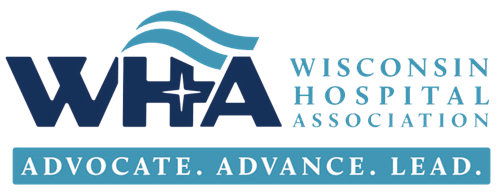Hospitals and health systems in Wisconsin provided more than $1.9 billion in charity care and community benefits during 2018, most of which came from covering Medicaid funding shortfalls.
“Community benefits are a very important aspect of what hospitals and health systems do in Wisconsin and how integral they are to their communities,” said Brian Potter, chief operating officer for the Wisconsin Hospital Association.
According to a recent report from WHA, health care providers in the state spent about $184 million on charity care last year, while the cost of Medicaid shortfalls exceeded $1.2 billion.
Losses on other public programs were around $40 million, and nursing home losses were more than $11 million. Meanwhile, subsidized health services cost Wisconsin hospitals and health systems over $136 million in 2018.
“People are familiar with government underfunding and charity care costs — those are significant elements as hospitals and health systems provide excellent quality care and access despite those financial stresses,” Potter said in a statement.
But he said community benefits “go far beyond that” in Wisconsin.
“While the overall community benefits financial amount is significant, it only measures the cost of those benefits from the hospital financial perspective,” he said. “What these contributions mean to Wisconsin communities goes well beyond that and this report sheds more light on that value to local communities.”
Care providers spent more than $67 million on community health improvement services last year. This broad category includes clinical services, community health education, health care support services, and social and environmental improvement activities.
Cash or in-kind donations last year topped $39 million, while losses on education and workforce efforts for health professions were over $283 million. Research losses for 2018 were more than $12 million.
“Every corner of the state has a hospital or health care system helping their communities in specific areas of need,” said Eric Borgerding, president and CEO of WHA. “These institutions, their incredible staff and volunteers know that sometimes the only safety net available to a community comes from the hospital or health care system.”
WHA’s report breaks down community benefits by region, showing these costs aren’t spread evenly across the state. Benefits in the north-central region of the state were over $164 million last year, while the northeast — dubbed the “Packerland region” in the report — had more than $242 million in community benefits from care providers.
Meanwhile, the southeastern region, which covers the Milwaukee area, Racine and Kenosha, saw more than $897 million in community benefits last year.
The southern region, which includes Dane County, had more than $380 million in community benefits from care providers last year. The west-central region, near the Twin Cities, had around $64 million. And the western region just below had around $180 million in community benefits. The “Vikingland region” in the northwest saw around $22 million.
Within each of these regions, the 60-page report highlights various community efforts, including rural transportation for patients, food pantries providing free medical screening, mental health services, suicide prevention initiatives, opioid abuse programs, outreach to cancer patients and many more.
See the full report: http://www.wha.org/WisconsinHospitalAssociation/media/WHA-Reports/2019-WHA_CommunityBenefitsReport.pdf






